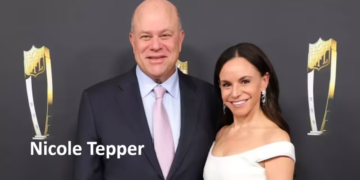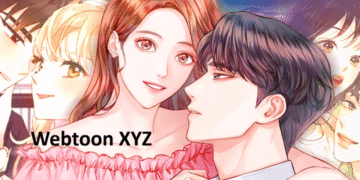High Guardian Spice stands as one of the most polarizing animated series to emerge from Crunchyroll’s original content initiative. This Western take on the magical girl genre sparked intense debate across animation communities, social media platforms, and YouTube channels long before its official release in 2021. The series represents a fascinating case study in how modern animation projects navigate representation, audience expectations, and the delicate balance between homage and originality.
Created by Raye Rodriguez, High Guardian Spice tells the story of four friends attending a magical academy where they learn to become guardians who protect the natural world. The series deliberately draws inspiration from beloved magical girl anime while attempting to infuse contemporary Western sensibilities about diversity, identity, and environmental consciousness. Whether you view it as a refreshing take on familiar tropes or a misguided attempt at capturing anime magic depends largely on your perspective and expectations going into the viewing experience.
The Origins and Development Journey
High Guardian Spice’s development story is almost as intriguing as the series itself. The project began as part of Crunchyroll’s ambitious push into original content creation, marking a significant departure from the platform’s traditional role as a distributor of Japanese anime. The streaming service invested heavily in creating Western animation that could appeal to their predominantly anime-loving audience while potentially attracting new viewers who might appreciate more familiar cultural references and representation.
The series was first announced in 2019, generating immediate controversy due to its promotional material and the way it was presented to the public. Many anime fans felt that Crunchyroll was betraying its core mission by funding Western animation instead of supporting more Japanese productions or improving their platform’s functionality High Guardian Spice. The initial trailer and promotional images became lightning rods for criticism, with some viewers dismissing the art style as inferior to traditional anime and others questioning whether the series could authentically capture the essence of magical girl storytelling.
Development challenges plagued the production from early stages, including delays that pushed the release date back multiple years. These setbacks only intensified scrutiny from skeptical audiences and gave critics more ammunition to question the project’s viability. The extended development period also meant that by the time High Guardian Spice finally premiered, audience expectations had solidified into either hopeful anticipation or predetermined dismissal, making it nearly impossible for the series to receive a neutral reception.
Characters and World-Building Elements

The character roster of High Guardian Spice centers around four main protagonists, each representing different personality archetypes common in magical girl narratives. Rosemary is the enthusiastic leader figure whose determination often outpaces her actual magical abilities. Sage serves as the more serious, academically-minded member of the group who struggles with family expectations and personal identity. Parsley brings comic relief and loyalty to the team dynamic, while Thyme rounds out the quartet with her mysterious background and gradual character development throughout the series.
The world-building attempts to create a magical academy setting that feels both familiar and distinct from its inspirations. The school itself features various magical disciplines, from potion-making to combat training, with an overarching emphasis on environmental protection and harmony with nature High Guardian Spice. This ecological theme runs throughout the series, positioning the guardians as protectors of the natural world against forces that would exploit or destroy it. The magic system incorporates elements of traditional witchcraft and herbalism, giving the series a slightly more grounded feel compared to some of its more fantastical anime counterparts.
Supporting characters include faculty members who serve as mentors and antagonists who threaten the balance the guardians are meant to protect. The series attempts to give depth to both heroic and villainous characters, though the execution of this character development receives mixed reviews from audiences High Guardian Spice. Some viewers appreciate the effort to create complex motivations for antagonists, while others feel the character writing lacks the nuance and emotional depth found in the best examples of the magical girl genre.
Animation Style and Visual Design Choices
High Guardian Spice’s animation style represents a deliberate fusion of Western cartoon aesthetics with anime-inspired character designs and visual storytelling techniques. The art direction employs bright, saturated colors that emphasize the magical and optimistic tone the creators intended to establish. Character designs feature the large expressive eyes and distinctive hairstyles common in anime while incorporating more diverse body types and facial features than typically seen in Japanese animation.
The animation quality itself became a significant point of discussion among viewers and critics. While some praised the fluid character animation and attention to detail in magical transformation sequences, others criticized inconsistencies in animation quality between episodes and scenes High Guardian Spice. The series clearly operated on a television budget rather than the higher production values associated with theatrical anime releases, which created unfavorable comparisons for viewers accustomed to high-quality anime productions available on the same platform.
Visual effects and magical sequences attempt to capture the spectacle and wonder associated with magical girl transformations and combat scenes. The series incorporates traditional animation techniques alongside digital effects to create magical moments that feel appropriately fantastical High Guardian Spice. However, the execution of these sequences often falls short of the iconic transformation scenes that define the most beloved magical girl series, leading to disappointment among viewers hoping for more memorable visual moments.
Representation and Social Themes
One of High Guardian Spice’s most prominent features is its commitment to diverse representation across multiple dimensions. The series includes characters from various ethnic backgrounds, body types, and sexual orientations, making a conscious effort to reflect the diversity of its intended Western audience. This approach to representation extends beyond surface-level visual diversity to incorporate storylines that directly address issues of identity, acceptance, and belonging.
The series tackles themes of gender identity and expression through several character arcs, most notably through characters who question traditional gender roles or explore non-binary identities High Guardian Spice. These storylines attempt to provide positive representation for LGBTQ+ viewers while remaining accessible to audiences who might be less familiar with these topics. The handling of these themes receives praise from some quarters for its earnest approach and criticism from others who feel the execution lacks subtlety or sophistication.
Environmental consciousness serves as another major thematic element throughout the series. The guardians’ mission to protect nature aligns with contemporary concerns about climate change and environmental destruction, giving the magical girl framework a modern relevance that extends beyond pure entertainment High Guardian Spice. This ecological focus provides opportunities for educational moments about environmental stewardship while maintaining the fantastical elements that make magical girl stories appealing to younger audiences.
Reception, Criticism, and Cultural Impact
High Guardian Spice’s reception highlights the complex relationship between fan expectations, cultural representation, and artistic execution in modern animation. The series received significant criticism from segments of the anime community who felt it failed to capture the essential elements that make magical girl anime compelling High Guardian Spice. These critics pointed to perceived weaknesses in storytelling, character development, and animation quality as evidence that Western creators couldn’t successfully emulate Japanese animation styles and narrative techniques.
Conversely, other viewers and critics praised the series for its representation efforts and its attempt to create magical girl content specifically tailored to Western audiences and sensibilities. Supporters argued that High Guardian Spice shouldn’t be judged solely against anime standards but should be evaluated as its own creative work with distinct goals and target demographics. This perspective emphasizes the series’ positive messages about friendship, environmental responsibility, and acceptance of diversity.
The cultural impact of High Guardian Spice extends beyond its actual content to encompass broader discussions about representation in animation, the role of streaming platforms in content creation, and the challenges faced by Western creators working in anime-influenced styles. The series became a symbol for various cultural and political debates, often overshadowing discussions of its actual merits and flaws as an entertainment product. This phenomenon demonstrates how animated series can become focal points for larger cultural conversations that extend far beyond their original creative intentions.
Final Thoughts on High Guardian Spice’s Legacy
High Guardian Spice occupies a unique position in the landscape of Western animation and magical girl media. While it may not have achieved the widespread acclaim or cultural impact its creators initially hoped for, the series serves as an important milestone in the evolution of diverse representation in animation and the ongoing dialogue between Eastern and Western animation traditions.
The series’ true success or failure cannot be measured solely through immediate reception or viewership numbers. Instead, High Guardian Spice’s legacy will likely be determined by its long-term influence on subsequent animated series, its impact on viewers who connected with its representation and themes, and its role in encouraging more diverse voices in animation production. Whether future magical girl series learn from its perceived missteps or build upon its innovative approaches remains to be seen, but High Guardian Spice has undoubtedly contributed to important conversations about representation, authenticity, and cultural adaptation in modern animation.

















































































